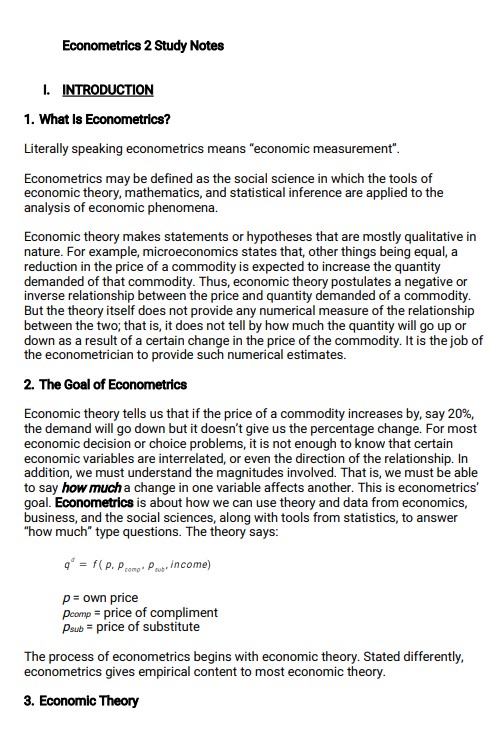Econometrics Study Notes
Summary:
These Econometrics Study Notes explain that Econometrics is the application of economic theory, mathematics, and statistical inference to analyze economic phenomena. It aims to provide quantitative estimates of the relationships between economic variables. Economic theory provides qualitative hypotheses, but it is the job of econometricians to provide numerical estimates.
The goal of econometrics is to answer “how much” type questions by quantifying the relationships between variables. This involves specifying a statistical model that expresses the relationship between variables and includes a random error term. Econometricians use estimators to determine the model’s parameters and evaluate its adequacy through diagnostic tests.
Data for econometric analysis can be obtained through experiments or non-experimental observations. The classical econometric methodology involves stating a theory or hypothesis, specifying a mathematical model, developing a statistical model, obtaining data, estimating parameters, hypothesis testing, forecasting, and using the model for control or policy purposes.
For example, the Keynesian theory of consumption postulates a positive relationship between consumption and income. Econometric models are used to estimate the parameters and test the theory using data. The estimated model can also be used for forecasting and policy decision-making.
Excerpt:
Econometrics Study Notes
I. INTRODUCTION
- What Is Econometrics? Literally speaking, econometrics means “economic measurement”. Econometrics may be defined as the social science in which the tools of economic theory, mathematics, and statistical inference are applied to analyse economic phenomena.
Economic theory makes statements or hypotheses that are mostly qualitative in nature. For example, microeconomics states that other things being equal, a reduction in the price of a commodity is expected to increase the quantity demanded of that commodity. Thus, economic theory postulates a negative or inverse relationship between the price and quantity demanded of a commodity. But the theory itself does not provide any numerical measure of the relationship between the two; that is, it does not tell by how much the quantity will go up or down due to a certain change in the commodity’s price. It is the job of the econometrician to provide such numerical estimates.


Reviews